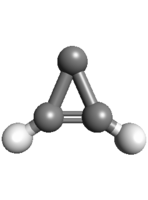|
The transition frequencies were largely taken
from
(1) M. Bogey, C. Demuynck, J. L. Destombes, and
H. Dubus,
1987, J. Mol. Spectrosc. 122, 313.
Additional lines were published by
(2) S. Spezzano, F. Tamassia, S. Thorwirth,
P. Thaddeus, C. A. Gottlieb, and M. C. McCarthy,
2012, Astrophys. J. Suppl. Ser. 200, Art. No. 1.
The uncertainties in (1) are overall somewhat conservative.
Nevertheless, one line with large residual already in (1)
has been omitted from the final fit. The parameter set is
similar to that in (1), but ΦKJ and
ΦJK were not used.
Predictions with uncertainties larger than
0.5 MHz should be viewed with caution.
The deuterium hyperfine splitting has been
resolved to a large degree in (2).
The hyperfine splitting can also be
resolved in astronomical observations
of cold sources. Therefore, a separate
hyperfine calculation is provided up to
J = 3 and up to 60 GHz.
The partition function values include the
spin-multiplicity of the D nucleus.
Note: Non-trivial
spin-statistics do not matter for this
low symmetry (CS) isotopolog.
The total dipole moment was taken from the main
species, see e038506.cat. The large rotation of
the inertial axis induces a sizable a-dipole
moment component. The relative magnitude was
derived in (2).
|
